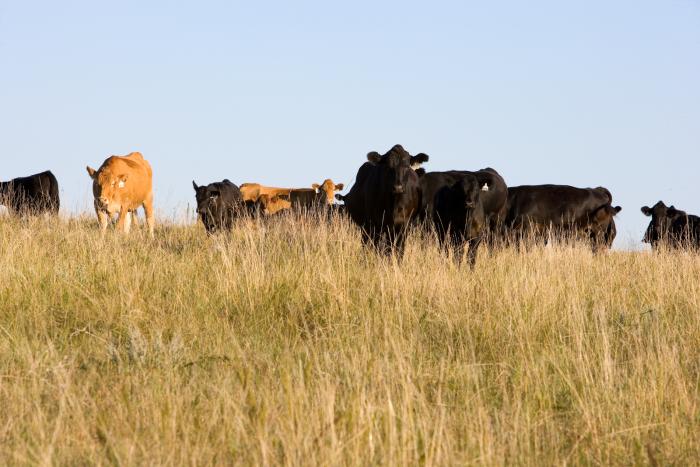440 Acres of Cropland Converted to Pasture in McHenry County
President Theodore Roosevelt is credited with saying, “Do what you can, with what you have, where you are.”
Kindra Gordon writes from Whitewood, S.D.
In McHenry County, David and Kathryn Woodall are applying that philosophy on their 5,000-acre crop and cattle operation.
To address conservation concerns of erosion and flooding, the Woodalls recently re-evaluated the best use of 440 acres of marginal cropland.

David describes these acres as “flooded in wet years and blowing in dry years.”
The hilly, remote cropland was difficult to get machinery for planting and harvesting.
All total, Woodall recognized it didn’t make economic or environmental sense to keep this land as cropland.
After seeing a few neighbors convert highly erodible lands back to grass pastures, Woodall decided to do the same. He worked with staff at the USDA Natural Resources Conservation Service (NRCS) in Towner, N.D., to make the conversion a reality.
Through NRCS, Woodall secured an Environmental Quality Incentives Program (EQIP) contract in 2014. Towner, N.D. NRCS District Conservationist, Doug Dragseth and other NRCS staff worked with Woodall to select grass species best suited to the soils and assisted in developing a grazing plan to identify where to place fences and a water tank and determine appropriate stocking rates for the new pastures. The EQIP contract also provided cost-share assistance to Woodall for the project.
In total, 4.5 miles of fence were installed (about half barb wire and half electric), creating two new pastures of 220 acres each. A well and solar pump were also installed, with one 3,000-gallon water tank that could be accessed from both pastures. Grasses seeded on 120 acres included green needle grass, western wheat grass, Canada wild rye, and meadow brome grass.
Woodall begins grazing one pasture in mid-June, after about 30 days rotates the herd to the second pasture, allowing the first pasture time to rest and regrow. A month later, he can move the herd back to the first pasture to graze a second time. If growing conditions allow, the cattle can return to the second pasture for grazing a second time as well.
The extra grazing capacity has allowed the Woodalls to increase their cow herd to 125 commercial cows, which is bringing in extra revenue for the farm. Additionally, their four daughters Mackenzie, Michelle, and Margo Woodall and Maggie Brandt all run some of their own cows on the family farm. Mackenzie,16, helps on the farm when not in school. The others help as their work schedules allow.
Having the additional pastures has allowed Woodall to reduce the grazing pressure on some of his other pastures. He also utilizes crop aftermath to graze cows on in the fall, giving pastures another chance to rest.
Converting the marginal cropland to pasture has worked out well for everyone involved in the project, Dragseth says.
“This land wasn’t being farmed because it was often flooded, and it was difficult to get to. David already had some cattle and seeding this land to grass gave him a chance to expand his herd. From a conservation standpoint, this land is now back to its best use.”
Woodall isn’t done making some conservation changes on his farm. He’s been using minimum till for several years, but recently bought a no-till drill and is intent on using less tillage on as many of his cropland acres as he can.

